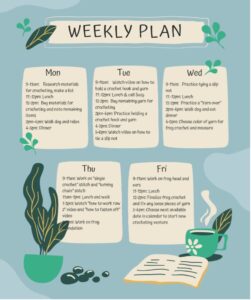By Julia Simak
You check the calendar, and it’s somehow already October. The last 12 months flew by, and you’re back to the month of pumpkins, costumes, and sugar-crazed children. The 31st can go one of two ways: the nice way or the frazzled, panicked, last-minute, Party-City-nightmare way. Will your kids have the costumes they want, or will they be kicking and screaming five minutes before the neighbors show up with their kids? Believe it or not, it’s up to you!
Step 1: Make a plan.
What are you going to do on Halloween? Are you taking your youngsters out trick-or-treating and then hopping into bed by 9, or are you throwing a party with the whole neighborhood on your driveway until midnight? Whatever it may be, it requires a plan. Despite which type of celebration you go with, kids will be knocking on your door expecting an assortment of candy, so plan on taking a trip to the store.
Step 2: Acquire the goods.
Halloween comes alive at Target in the beginning of September, so make sure you go as early as possible. While you’re there, grab some decor for the front porch. They’ve got skeletons, pumpkins, and a plethora of choices in the dollar section. You know which one I’m talking about… we’ve all been there! They also have costumes, which brings us to our next step.
Step 3: Lions, tigers, and bears, oh my!
The costume options are endless, so it can be overwhelming for your kiddo to choose what to parade in around your neighborhood. That’s why it’s essential that they come with you to the store. Not only will they be able to pick out their costume then and there, but they can try it on, too. This will prevent you from having to return a costume that your kid doesn’t like or won’t fit in.
Step 4: It’s the night of Halloween.
You’ve got a scary movie playing, hot apple cider is warming up on the stove, and there are several children in your house, all of whom you cannot identify because two of them are wearing ghost costumes and the other three are matching root vegetables. Now that everything has been planned, acquired, and bought, take a big exhale and enjoy the spooky night.
 THINKING ORGANIZED
THINKING ORGANIZED
